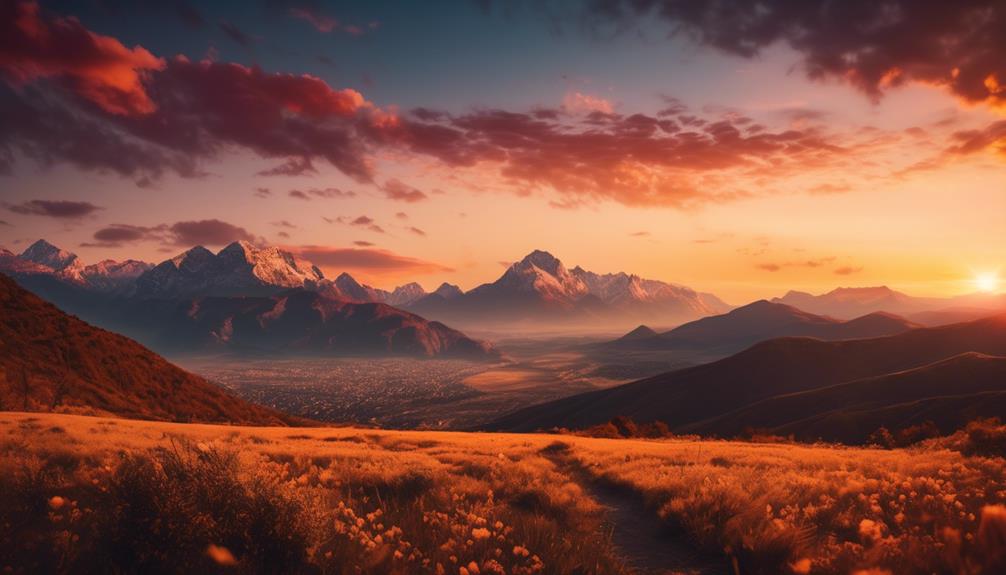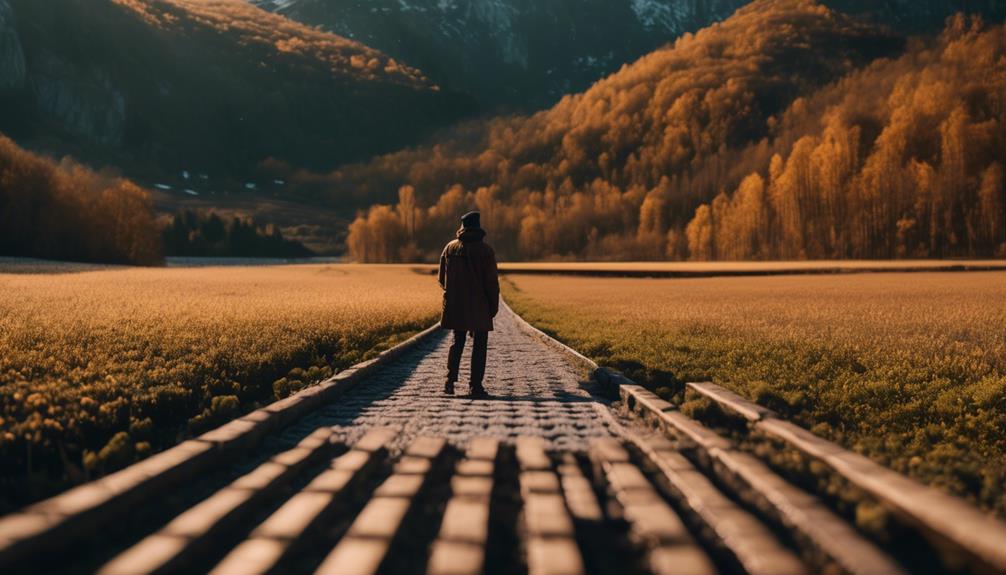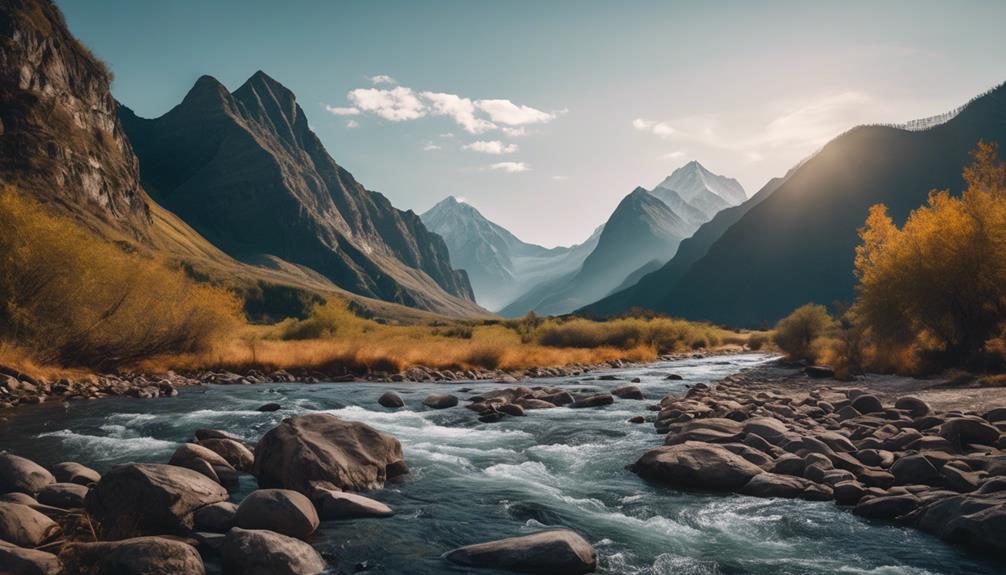Please note this post may contain affiliate links picked by me (Jay) that I have deemed may be of interest or relevant to you the reader of this.
These links do not affect the cost of the thing if you decide to purchase but i may get a little money if you choose to purchase.
For more information on my affiliate link policy click here.
Have you ever wondered what makes a photograph visually captivating? What sets apart a mundane snapshot from a stunning work of art?
The answer lies in the art of composition, and one of the fundamental principles that can elevate your photography to new heights is the Rule of Thirds.
As a passionate photographer who has spent countless hours perfecting my craft, I am excited to share with you a comprehensive guide on mastering composition through the Rule of Thirds.
By understanding and applying this powerful technique, you will be able to create captivating images that draw viewers in and leave them wanting more.
So, let's dive into the world of composition and unlock the secrets behind the Rule of Thirds.
Key Takeaways
- The Rule of Thirds is a fundamental principle in photography composition.
- Placing the subject along the lines or at the points of intersection creates a more dynamic composition.
- Placing the subject's eyes along one of the vertical lines draws attention to the face in portrait photography.
- Placing the horizon along one of the horizontal lines creates a sense of depth in landscape photography.
Understanding the Rule of Thirds
Understanding the Rule of Thirds is essential for capturing visually captivating and balanced photographs. It's a fundamental principle in photography composition that can transform ordinary images into extraordinary works of art. The Rule of Thirds divides the frame into a grid of nine equal parts, with two horizontal and two vertical lines intersecting at four points. By placing the subject or key elements along these lines or at the points of intersection, you create a more dynamic and visually appealing composition.
In portrait photography, the Rule of Thirds helps to create a sense of balance and harmony between the subject and the surrounding elements. Placing the subject's eyes along one of the vertical lines, for example, draws attention to the face and allows the viewer to connect with the subject on a deeper level. It also provides room for negative space, which can add a sense of elegance and simplicity to the portrait.
In landscape photography, the Rule of Thirds can be used to create a sense of depth and scale. Placing the horizon along one of the horizontal lines, for instance, can enhance the composition by showcasing the foreground, middle ground, and background. This technique allows the viewer to explore the image from front to back, creating a more immersive experience.
Understanding and applying the Rule of Thirds in both portrait and landscape photography opens up a world of creative possibilities. It allows you to break away from traditional compositions and experiment with new and innovative ways to capture the beauty of your subjects and surroundings. So, next time you pick up your camera, remember to embrace the Rule of Thirds and watch your photographs come alive with visual impact.
Applying the Rule of Thirds in Framing
When framing your photographs, the Rule of Thirds is a powerful technique that can elevate your composition to new levels of visual impact. It allows you to create a dynamic and balanced image by dividing your frame into nine equal parts using two horizontal and two vertical lines.
But applying the Rule of Thirds in framing goes beyond just placing your subject along these lines or at the intersection points. It involves exploring alternative composition techniques and understanding the impact of focal points.
One alternative technique is to use the Rule of Thirds grid as a guide to create diagonal lines within your frame. By placing your main subject along these lines, you can add a sense of movement and energy to your photograph. This technique works particularly well when capturing action shots or subjects in motion.
Another way to apply the Rule of Thirds in framing is by using the rule of thirds to create a strong focal point. Placing your subject at one of the intersection points can draw the viewer's attention and create a visually engaging composition. Whether it's a person, an object, or a particular element in your scene, the focal point becomes the center of interest and adds depth and intrigue to your photograph.
Balancing Elements Using the Rule of Thirds
One of the key principles in achieving a visually balanced composition is by effectively balancing elements using the Rule of Thirds. This rule divides an image into nine equal parts using two vertical and two horizontal lines. The placement of key elements along these lines or at their intersections creates a more visually appealing and balanced composition.
In portrait photography, the Rule of Thirds can be used to place the subject's eyes at one of the intersections, drawing attention to the most important part of the image. By positioning the subject slightly off-center, it adds a dynamic element to the composition, making it more engaging and visually interesting.
In landscape photography, the Rule of Thirds can be applied to create a sense of depth and balance. Placing the horizon line along one of the horizontal lines, either at the upper or lower third, can add interest to the image while maintaining a balanced composition. By positioning key elements such as trees, mountains, or buildings along the vertical lines, it adds depth and guides the viewer's eye through the image.
Here is a table that visually represents the Rule of Thirds:
Enhancing Depth With the Rule of Thirds
Now let's explore how the Rule of Thirds can be utilized to enhance the depth of your photographs. One of the most effective ways to achieve this is by utilizing leading lines in your rule of thirds composition. Leading lines are elements in your photograph that draw the viewer's eye into the image and create a sense of depth and perspective.
By placing these leading lines along the gridlines of the Rule of Thirds, you can create a visually striking composition that guides the viewer's gaze deeper into the scene.
When incorporating the rule of thirds in landscape photography, you can use leading lines such as roads, rivers, or fences to lead the viewer's eye from the foreground to the background, making the image feel more immersive and three-dimensional. For example, a winding road leading towards a distant mountain range can add a sense of depth and scale to your photograph.
Additionally, placing your main subject or focal point at one of the intersections of the gridlines can also enhance the depth in your composition. By doing so, you create a sense of balance and draw attention to the subject, while also providing a visual pathway for the viewer's eye to explore the rest of the image.
Creating Visual Interest With the Rule of Thirds
To truly captivate your audience, harness the power of the Rule of Thirds to create visual interest in your photographs. The Rule of Thirds isn't just a basic guideline for composition; it's a tool that can elevate your storytelling and bring a fresh perspective to your images. By exploring alternative composition techniques, you can push the boundaries of traditional photography and create innovative and captivating visuals.
The impact of the Rule of Thirds on storytelling in photography can't be understated. By placing your subject off-center, you introduce a sense of movement and dynamism to your image. This creates intrigue and engages the viewer, as their eyes naturally follow the subject's gaze or movement. This technique allows you to tell a story within a single frame, capturing the audience's attention and inviting them to explore the narrative further.
Additionally, the Rule of Thirds can be used to create balance and tension in your photographs. Placing key elements along the gridlines or at their intersections creates a harmonious composition that's visually pleasing. On the other hand, intentionally breaking the rule and placing your subject outside the gridlines can create a sense of unease or mystery, adding depth and interest to your image.
Frequently Asked Questions
Can the Rule of Thirds Be Applied to Any Type of Photography, or Is It More Suitable for Certain Genres?
Applying the rule of thirds in photography is a game-changer. It adds depth, balance, and visual interest to any image. Whether it's landscape or street photography, the rule of thirds can be applied to create stunning compositions.
In landscape photography, placing the horizon on one of the horizontal lines can create a sense of scale and emphasize the foreground or the sky.
In street photography, placing the subject on one of the intersecting points can draw attention and create a dynamic composition.
The rule of thirds is a versatile tool that every photographer should master.
Are There Any Exceptions or Situations Where It Is Better to Break the Rule of Thirds for a More Compelling Composition?
In certain situations, breaking the rule of thirds can actually result in a more compelling composition. While the rule of thirds is a powerful tool, there are exceptions where alternative composition techniques can be used to create a unique and innovative image.
By intentionally breaking the rule, you can experiment with different focal points, leading lines, or symmetry to create a visually striking composition that grabs the viewer's attention.
Don't be afraid to break the rules and push the boundaries of composition for a captivating photograph.
How Can I Practice and Improve My Ability to Visualize and Apply the Rule of Thirds in Real-Time While Shooting?
To improve my ability to visualize and apply the rule of thirds in real-time while shooting, I find practical exercises to be incredibly helpful.
By incorporating the rule of thirds into my daily photography, I challenge myself to think creatively and find new and innovative ways to compose my shots.
It's exciting to see how this technique can transform a simple photo into something visually captivating.
With practice and experimentation, I continue to refine my skills and push the boundaries of my compositions.
Are There Any Common Mistakes or Pitfalls to Avoid When Using the Rule of Thirds in Composition?
When using the rule of thirds in composition, there are a few common mistakes that beginners should avoid.
One mistake is placing the subject directly in the center of the frame, which can make the image feel static.
Another mistake isn't paying attention to the balance of the elements within each third of the frame.
To avoid these pitfalls, try experimenting with different placements and compositions to create dynamic and visually appealing photographs.
Can the Rule of Thirds Be Used Effectively in Post-Processing to Enhance the Composition of a Photograph?
Using post-processing techniques to enhance the rule of thirds in composition is an exciting way to take your photography to the next level. By exploring alternative composition techniques in post-processing, you can create visually stunning images that captivate your audience.
Whether it's adjusting the placement of your subject or adding subtle overlays, the rule of thirds can be effectively utilized to enhance the overall composition of your photograph. With a little experimentation and creativity, the possibilities are endless.
Conclusion
In conclusion, mastering the rule of thirds in photography is like unlocking a world of infinite possibilities.
By understanding and applying this fundamental principle, you can create captivating and balanced compositions that draw the viewer's eye.
Just as a conductor harmonizes different musical notes to create a masterpiece, the rule of thirds allows you to balance elements and enhance depth in your photographs.
So grab your camera and let the rule of thirds be your guiding star on your photographic journey!


